Safe Work Australia is developing a model Code of Practice (model Code) which provides practical guidance for employers on how to manage the risks of biological hazards at work.
Share your research
We’re keen to uncover the latest research innovations and to understand how experts are approaching research that might affect WHS and workers’ compensation systems.
Safe Work Australia has published a new report on workplace and work-related violence and aggression in Australia.
In March 2024 Safe Work Australia commissioned the Australian Industrial Transformation Institute, Flinders University to undertake a literature review on harmful behaviours in the workplace.
This report examines the evidence of different approaches to early intervention in workers’ compensation in Australia and what works to reduce recovery times and improve return to work outcomes for injured workers.
This report provides evidence-based information about diseases and occupational exposures for consideration by jurisdictions when reviewing the deemed diseases lists in their workers’ compensation legislation.
This snapshot presents findings about the impacts of the COVID-19 pandemic on workers returning to work after an injury or illness.
Safe Work Australia commissioned Deloitte Access Economics to explore the cost of work-related injury and illness in Australia and estimate how much value could be created within the Australian economy by removing work-related injury and illness.
Safe Work Australia commissioned Deloitte Access Economics to undertake research exploring the cost of workplace injury and illness in Australia.
Safe Work Australia commissioned Deloitte Access Economics to undertake research exploring the cost of workplace injury and illness in Australia.
This independent report provides information about workers’ perception and knowledge of workers’ compensation systems as well as information about workers' communication preferences.
The methodological report supports the 2021 National Return to Work summary report and details the methodology followed in the compilation of the 2021 National Return to Work Survey.
This summary presents highlights from the 2021 National Return to Work Survey including key metrics, insights and time series data. The summary also includes a section on COVID-19 and its impact on recovery and return to work.
This report provides evidence-based information on a list of diseases and occupational ex
This report provides a summary of key measures from the 2021 National Return to Work Survey – the ‘returned to work rate’ and the ‘current return to work rate’.
This paper analyses the complex nature of workers’ compensation coverage in Australia. The paper considers whether current workers’ compensation coverage arrangements in Australia remain fit for purpose, by using gig economy and agriculture industry case studies.
WHS reporting needs to provide relevant, robust and timely information to inform decisions that influence ongoing business performance.
The recommendations from inquests and research help to inform quad bike safety initiatives.
Comparing Australian and New Zealand workers’ compensation
We release a biennial report comparing Australia and New Zealand’s workers’ compensation arrangements:
The Monash Centre for Occupational and Environmental Health (MonCOEH) prepared this report, which:
Why has this research been done?
- To better understand the prevalence of workplace bullying and harassment in Australian workplaces and to identify workplace risk factors associated with the occurrence of bullying and harassment.
What did we find?
- B
Why has this research been done?
-
Sickness absence and presenteeism have a direct impact on organisation productivity
Why has this research been done?
Two important aspects of safety climate are management safety empowerment and management safety justice, which are the perceived degree to which employers respectively empower their workers to influence aspects of their own safety and deal with hea
A random, population-based sample of 5,528 Australian workers participated in the Australian Work Exposure Study (AWES). Workers answered questions about the tasks they completed and the controls used at work.
The purpose of this 2015 study is to estimate the cost of work-related injury and illness to Australian employers, workers and the community.
This educational resource provides guidance about work health and safety and safe work design.
It covers the evidence and theory behind the principles of good work design. Further guidance is available in:
This paper reports on the attitudes of Australian workers towards accepting risk taking and rule breaking in the workplace.
The issue
Polycyclic aromatic hydrocarbons (PAHs) are a group of chemical compounds formed during the incomplete combustion of organic material.
The Australian Work Exposures Study (AWES) was a national survey conducted by the Western Australian Institute of Medical Research (WAIMR) in 2011–12 that investigated work-related exposures among Australian workers to 38 known or suspected carcinogens.
The Australian Work Exposures Study (AWES) was a national survey conducted by the Western Australian Institute of Medical Research (WAIMR) in 2011–12 that investigated work-related exposures among Australian workers to 38 known or suspected carcinogens.
The Australian Work Exposures Study (AWES) was a national survey conducted by the Western Australian Institute of Medical Research (WAIMR) in 2011–12 that investigated work-related exposures among Australian workers to 38 known or suspected carcinogens.
This information sheet provides advice on the current laws and requirements when managing inorganic lead in the workplace.
This report:
This project was undertaken by Instinct and Reason Pty Ltd under commission from Safe Work Australia. The report describes the findings of a qualitative research study on the structural metal product manufacturing industry—an industry with a high rate of work-related injury and illness.
The report 'The relationship between work characteristics, wellbeing, depression and workplace bullying' describes the early findings from a project conducted as a partnership between Safe Work Australia and The Australian National University.
There has been very little published about how and why interventions by regulators influence work health and safety compliance and outcomes.
Several European studies have reported high levels of residual chemical levels in sealed shipping containers. The Australian Customs and Border Protection Service found similar results when testing containers in Australia.
Biomechanical demands such as repetitive hand or arm movements, lifting heavy loads or working in awkward postures contribute to the development or worsening of inflammatory or degenerative musculoskeletal disorders.
